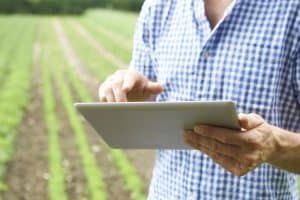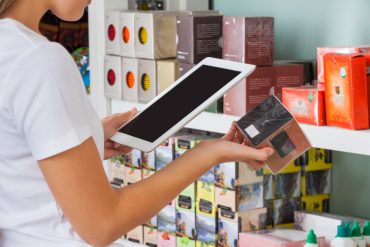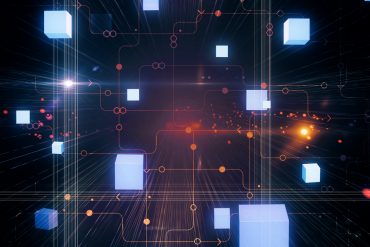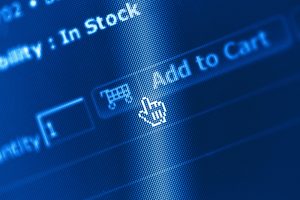
The autonomous farm is more reality than fiction and has evolved and accelerated significant advances in technology.
In 1962 Dutch grower Cornelis Sieling invented the first autonomous tractor – the Agri-bot. The Agri-bot was a crude yet effective invention that enabled the plowing of a field in both directions without the need to turn around. This was the world’s first fully automatic autonomous plowing tractor – using a feeler wheel in the furrow for navigation. Cornelis had no onboard computer or IoT (internet of things) sensors to indicate his position at the end of a row. He was not performing analytics on plow depth or soil compaction. Testing, analysis, and innovation were all very mechanical and done via physical observation. In 1962, a grower had to get his hands dirty with the land, crop, and machines that we relied upon to bring products to market. While the Agri-bot was the first such innovation of its kind, it served more as a catalyst for the transformation of farms into agricultural laboratories and set the stage for what we refer to as the autonomous farm. Below, we will discuss some of the challenges we face as a society, the ways in which agriculture continues to transform via experimentation and innovation to meet these challenges, the impact of such innovation on humanity, and the technological opportunities that exist to enable more autonomous farming.
Current estimates indicate that some 800 million people continue to live in hunger. By, 2050 the world population will be nearly 10 billion people. The agriculture industry will need to produce 70% more food on a declining agriculturally profitable landmass as population centers spread into rural, agricultural land. Complicating matters, growers today can spend as much as 40% of his/her time repairing and preparing equipment. An aging grower population, increasing urbanization, decreasing interest in a farm life are also increasing the demands on growers and families to work longer hours. In Canada, for example, it is estimated that by 2030 there will be a farm-related labor crisis of 123,000 jobs in part due to 25% of growers being age 65 or older by 2025. To meet this herculean challenge, it is critical to connect the collective entrepreneurial spirits of growers, partners, and researchers – enabled by technology, guided by true opportunistic imperatives that will bring about the age of Agriculture 4.0 (Ag 4.0).
Ag 4.0 is, at its core, the sharing of data by things (equipment, sensors, communications networks) to improve the ability of those things to deliver efficiencies through connection and collaboration. Ag 4.0 offers the opportunity to drive down costs, improve efficiencies, significantly reduce waste, and deliver high-quality, safe, and healthy product from farm to fork (table.) The creation, collection, and use of this data can provide the grower with insights and opportunities for vast innovation and automation. The use of artificial intelligence, architectures for real-time ingestion and processing of data, and IoT standards allow for device-to-device communications have influenced the rapid evolution and automation in agriculture. Today’s farms are quickly turning into bleeding-edge agricultural laboratories, and new technologies that require little human intervention are coming into view that will help further address these challenges.
Ag. 4.0 requires that things be Autonomous, Connected, and Coordinated. Autonomous equipment has the capacity to act independently in relation to other equipment, people, animals, crops, and other objects that compete with that equipment’s primary work objective. Autonomous equipment is rich with sensors and cameras, all providing feedback to an artificial intelligence (AI) platform on the equipment or at the IoT edge. It is necessary to continuously optimize the complexities of these deep learning algorithms and maintain onboard/on-sensor redundant systems to deliver optimized results and provide a safety net for unforeseen events: a human being in the path of equipment, the failure of another piece of equipment in the field or a sudden storm that might force the equipment to suspend activities.
In connected platforms, the equipment will leverage onboard sensors to communicate externally and exploit edge-computing (external sensors) capabilities. Such edge devices will continuously analyze ambient properties (e.g., air, soil, water, location) and provide that analysis to an equipment’s AI model to ensure the equipment remains (for example) within identified property boundaries. Also, sensors need not be isolated to the field. A grower can wear sensor-embedded clothing that provides their precise location and relative position to all equipment to ensure their safety. Family pets and livestock can wear sensors for the same reason. Whereas autonomous equipment will not ‘see’ a person until it is possibly too late, a connected vehicle will ‘know’ where any sensor-bearing equipment or person is regardless of where the equipment is operating.
Finally, the true leap to the automated farm will be the environment where equipment will coordinate its activities with other equipment. Once connected, the last known location of a piece of equipment will be important should it become disabled, sending an alert to the grower while simultaneously self-requesting the dispatch of a replacement vehicle and a work order for repair to a vendor. Once equipment is connected, the tsunami of available data will require a platform that can manage it, synthesizing it and being able to then tell a story thru analytics to growers, investors, partners, and to the equipment itself. Imagine weather sensors providing feedback to equipment where the probability of a thunderstorm will only impact a part of the farm, suspending operations in that field while allowing equipment elsewhere to continue.
True connectivity will occur when both autonomous and connected equipment operate in a holistic manner. Not only will equipment know where it is and be able to self-diagnose and understand where it is in relation to other pieces of both autonomous and connected pieces on the farm, but it will have access to other pieces of relevant information. When irrigation is expected to be turned on to as to allow itself to exit the area prior to irrigation, take information from AI systems that can tell where additional irrigation is needed, or additional plowing is required to control weeds and pests. Farming will also become a 24×7 operation during the growing season. Daylight and fatigue no longer become inhibitors to work.
The autonomous farm is more reality than fiction and has evolved and accelerated significant advances in technology since Cornelis. Companies like John Deere have developed and refined autonomous agricultural equipment ranging from satellite-guided and directed machines to more fully autonomous equipment that can make real-time automatic adjustments based on embedded air, soil, and moisture sensors. As the autonomous development of Ag 4.0 matures, innovations will yield a new evolution towards Ag 5.0, where the outcomes will be focused on connected and coordinated platforms. The farm is quickly becoming the ‘app.’ This evolution will be the roadmap that aligns the global consumer needs for food to the growers’ needs of efficiency, profitability, health, and safety.




























